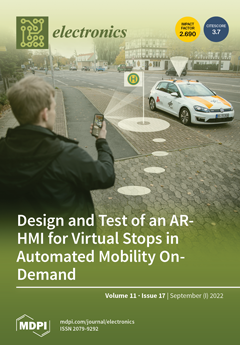Open AccessArticle
Multi-Class Pixel Certainty Active Learning Model for Classification of Land Cover Classes Using Hyperspectral Imagery
by
Chandra Shekhar Yadav, Monoj Kumar Pradhan, Syam Machinathu Parambil Gangadharan, Jitendra Kumar Chaudhary, Jagendra Singh, Arfat Ahmad Khan, Mohd Anul Haq, Ahmed Alhussen, Chitapong Wechtaisong, Hazra Imran, Zamil S. Alzamil and Himansu Sekhar Pattanayak
Cited by 20 | Viewed by 2516
Abstract
An accurate identification of objects from the acquisition system depends on the clear segmentation and classification of remote sensing images. With the limited financial resources and the high intra-class variations, the earlier proposed algorithms failed to handle the sub-optimal dataset. The building of
[...] Read more.
An accurate identification of objects from the acquisition system depends on the clear segmentation and classification of remote sensing images. With the limited financial resources and the high intra-class variations, the earlier proposed algorithms failed to handle the sub-optimal dataset. The building of an efficient training set iteratively in active learning (AL) approaches improves classification performance. The heuristics-based AL provides better results with the inheritance of contextual information and the robustness to noise variations. The uncertainty exists pixel variations make the heuristics-based AL fail to handle the remote sensing image classification. Previously, we focused on the extraction of clear textural pattern information by using the extended differential pattern-based relevance vector machine (EDP-AL). This paper extends that work into the novel pixel-certainty activity learning (PCAL) based on the information about textural patterns obtained from the extended differential pattern (EDP). Initially, distributed intensity filtering (DIF) is used to eliminate noise from the image, and then histogram equalization (HE) is used to improve the image quality. The EDP is used to merge and classify different labels for each image sample, and this algorithm expresses the textural information. The PCAL technique is used to classify the HSI patterns that are important in remote sensing applications using this pattern collection. Pavia University and Indian Pines (IP) are the datasets used to validate the performance of the proposed PCAL (PU). The ability of PCAL to accurately categorize land cover types is demonstrated by a comparison of the proposed PCAL with existing algorithms in terms of classification accuracy and the Kappa coefficient.
Full article
►▼
Show Figures





